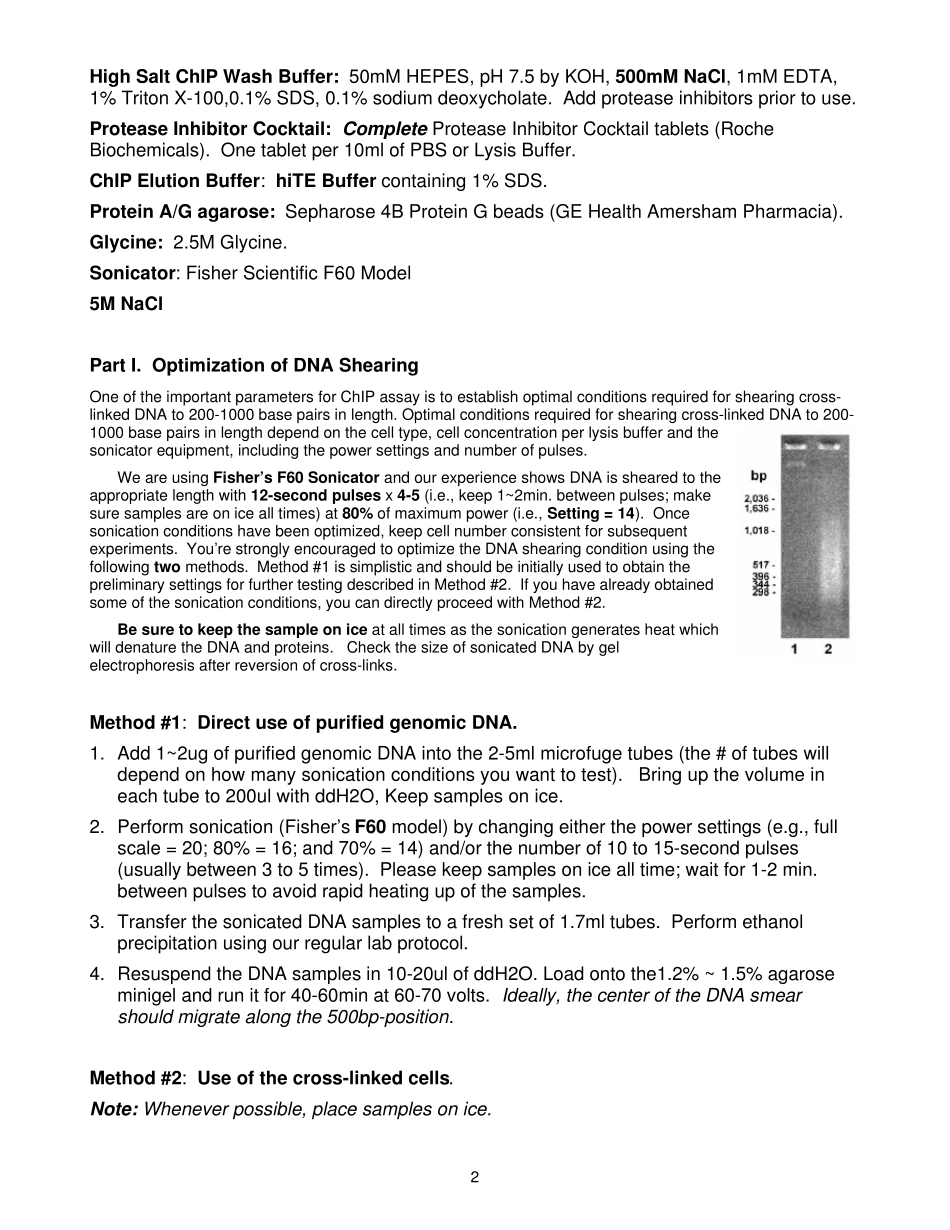1 Chromatin Immunoprecipitation (ChIP) Analysis for Protein-DNA Interactions Weike Si, 6/22/05; Commented by TCH 8/6/05 General Background and Considerations ChIP is a widely used method to identify specific proteins associated with a region of the genome, or in reverse, to identify regions of the genome associated with specific proteins. These proteins can be isoforms of histones modified at a particular amino acid or other chromatin associated proteins. When employed with antibodies that recognize histone modifications, ChIP can be used to “measure” the amount of the modification. An example of this would include measurement of the amount of histone H3 acetylation associated with a specific gene promoter region under various conditions that might alter expression of the gene. Histones are not the only proteins that can be studied using this technique. Much of the recent interest has been in analyzing transcription factor distribution throughout the genome or at specific loci. When performing ChIP, cells are first fixed with formaldehyde to crosslink proteins to DNA and then chromatin is harvested from the cells and subjected to an immunoselection process, which requires the use of specific antibodies. Any DNA sequences cross-linked to the protein of interest will co-precipitate as part of the chromatin complex. After the immunoselection of chromatin fragments and purification of associated DNA, the detection of specific DNA sequences is performed. If the DNA which will be detected is associated with the protein or histone modification being examined, the relative representation of that DNA sequence will be increased (or enriched) by the immunoprecipitation process. Generally, standard PCR is performed to ...


